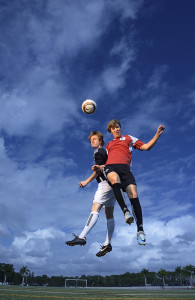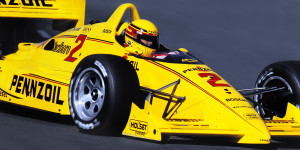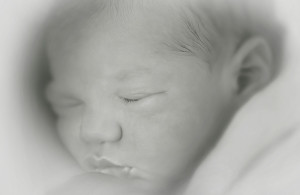Workshop at the Ranch – June 2014 – Your Questions & My Answers
 Hi and welcome to this edition of Workshop at the Ranch (WATR.) Your Questions and My Answers is continuing this month thanks to all of you who sent in a question via my website contact page. So, let’s get after it.
Hi and welcome to this edition of Workshop at the Ranch (WATR.) Your Questions and My Answers is continuing this month thanks to all of you who sent in a question via my website contact page. So, let’s get after it.
|
Image #1 Malachi Arrives … Nikon D4s, ISO8000, 1/40 at f5.6, Nikon 28-300mm lens, WB Auto (converted to Black and White in Photoshop CS5), SanDisk 32G Extreme Pro Flash Card.
This image of Malachi was made about 1 hour after being born. Haley & Andrew and little Malachi are all doing very well. I am now officially known as Gramps. Thanks again for asking…and thanks also for buying breakfast the other day. Adios. Dave |
|
NOTE: The next question will feature 3 images I made during the making of my latest KelbyOne class: 3 Ways to Light Up Sports Action. |
|
Image #2 Style Points (with Nikon SB910 SPEEDLIGHTS) … Nikon D800, ISO200, 1/1600 at f6.3, Nikon 14-24mm lens, WB 6250K, 4 Nikon SB900 Speedlights at ¼ power each, FourSquare bracket and Soft Box, Manfroto Lightstand, Radio Popper PX Transmitter and Receiver, Nikon SU-800 Commander, SanDisk 32G Extreme Pro Flash Card.
Regarding your question, the answer is YES. I have 9 online video classes on the KelbyOne website: www.kelbyone.com Many of them involve lighting with Speedlights and also Lightpainting techniques, plus Sports Action as well. BEST part is that you do not need to be a KelbyOne member to access them. Watching KelbyOne classes has never been easier…and anyone can watch. Online classes are now available for anyone to watch (even non-members) as many times as you want for 72 hours for only $6.99. My latest KelbyOne video is called: 3 Ways to Light Up Sports Action. This is a very in-depth class teaching the A-Zs about High Speed Sync and HyperSync lighting systems using Speedlights, Quadra, and Ranger flash systems with both RadioPopper and Pocket Wizard FLEX TT5 triggering systems. This first image is an example from the chapters using Speedlights and the Radio Popper PX system to stylize tennis action. But I cover more than just the “high tech” side and spend time speaking about shooting sports action in general while we make use of lighting our athlete with Speedlights and a High Speed Sync shutter speed of 1/1600. |

Image #3 Sky Ball (with Elinchrom Quadra) … Nikon D800, ISO200, 1/1000 at f8, Nikon 24-70mm lens, WB 3030K, Elinchrom Quadra power pack (400 ws power pack) and Elinchrom “S” (standard) Flash Head with Full CTO Warming Gel placed over the front of the Elinchrom Sport Reflector, Pocket Wizard FLEX TT5 transmitter and ST4 receiver, Manfroto Lightstand, SanDisk 32G Extreme Pro Flash Card. The next lighting system I showcased on the KelbyOne video is the Elinchrom Quadra with “S” (Standard) Flash Head. The Quadra with its 400 ws of power is ideal for illuminating sports action on location that is beyond the range of my 4 Speedlights. The Pocket Wizard FLEX TT5 system and its HyperSync feature is what enables me to use a fast shutter speed of 1/1000 and more to stop the action. I like the Quadra for its lightweight power pack and long lasting lithium battery. Its 400 ws is enough to use my “Moody Blue” formula of underexposing the ambient scene by 1.5 stops, use a WB 3030K (or Tungsten), while coving the front of the Flash-Sport Reflector with a Full CTO Warming Gel. This technique is awesome for lighting up action on location with a stylized look.
|
 Image #4 Super Slick (with Elinchrom Ranger RX Speed AS) … Nikon D800, ISO1000, 1/2500 at f9, Nikon 14-24mm lens (at 14mm), WB 3030K, 1 Elinchrom Ranger RX Speed AS (1100 ws power pack) with “S” (standard) Flash Head, with Full CTO Warming Gel placed over the front of the Elinchrom Sport Reflector, Pocket Wizard FLEX TT5 transmitter and receiver, Manfroto Lightstand, SanDisk 32G Extreme Pro Flash Card. Image #4 Super Slick (with Elinchrom Ranger RX Speed AS) … Nikon D800, ISO1000, 1/2500 at f9, Nikon 14-24mm lens (at 14mm), WB 3030K, 1 Elinchrom Ranger RX Speed AS (1100 ws power pack) with “S” (standard) Flash Head, with Full CTO Warming Gel placed over the front of the Elinchrom Sport Reflector, Pocket Wizard FLEX TT5 transmitter and receiver, Manfroto Lightstand, SanDisk 32G Extreme Pro Flash Card.
The final action lighting system featured on my latest KerlbyOne video was the Elinchrom Ranger RX Speed AS. The Ranger offers 1100 ws of power and a rechargeable battery system. And I used every ws of power the Ranger had so as to underexpose the scene by nearly 3 stops while using the WB 3030 and placing a Full CTO Warming Gel over the Flash-Sport Reflector. The 1100 ws of power is perfect for making “Super Moody Blue” stylizing which can really set your sports action apart from the crowd and is especially useful when drawing the attention of both editorial and commercial clients. This Superbike image was one of my favorites produced during the making of the KelbyOne video. This latest KelbyOne online video class is a record-breaking collection of techniques, cutting edge gear, and in-depth instruction that totals 2 hours 20 minutes. You get your moneys worth Sean…It’s like getting 3 classes for only $6.99. Thanks Sean for asking a great question. www.kelbyone.com Enjoy. Dave |
 Image #5 Mears Image … Nikon F4 film camera, Fujichrome 100 slide transparency film, 1/250 at f 5.6, Nikon 400mm f2.8 lens, Gitzo Monopod. Image #5 Mears Image … Nikon F4 film camera, Fujichrome 100 slide transparency film, 1/250 at f 5.6, Nikon 400mm f2.8 lens, Gitzo Monopod.
Q… Dear Mr. Black, I learn a great deal from your teaching and images in Workshop At The Ranch and also in your image portfolios. Beautiful work and interesting sports history. I see that some of your earlier images are shot on slide transparency film. I am wondering why not negative film? My second question is, what film scanner you use to convert your slides to digital format? A… Hello Arthur…I used to live in Wichita many moons ago, but the calling to “Go West Young Man” lead me to Colorado back in 1976. No one has ever asked me this question before. I’m guessing that you are a photographer that worked in Newspapers for many years. Well, Back when I started my sports photography I felt that I might have a chance to someday shoot for Sports Illustrated. SI photographers all shot slide transparency film and so I too shot slide transparency film. And when I began shooting assignments for Sports Illustrated, Time and Newsweek magazines I was already 100% on the required protocol of “Shooting on Transparency.”. I used a combination of Fuji and Kodak throughout the years before I switched to digital in 1999. I even tested new films produced by Kodak for a number of years. Transparency film offered the truest color and sharpest edge detail of the day. Turns out that those who shot slide transparency film had an easier time regarding making accurate exposures in the early days of digital. Regarding your second question, I used a Nikon Super Coolscan 4000 to scan my transparency archives into digital format until a few years ago when the Nikon D3x was released. I simply shot D3x images of my slides rather than scanning them…and it looked good. Today I use the Nikon D800 to simply and quickly photograph my slides rather than using a film scanner. This image of 4 time Indianapolis 500 winner Rick Mears was shot on Fujichrome 100 slide transparency film and pushed processed at ASA200. I photographed the slide using a Nikon D800 camera with a 28-300mm lens and a Kenko lens Extention Tube. I placed the slide on my old frosted glass surface light table and then point 2 Nikon SB-910 Speedlights face down into the Lightbox in order to have enough illumination behind the slide to give me an exposure of ISO1000, 1/500 at f10. This method is simpler and faster than scanning and the results are remarkable. The image tends to be extremely sharp and detailed, yet the digital capture seems to minimize the film grain. Images originally shot on Kodachrome have always been difficult to scan, but the D800 handles the process beautifully. Great question Arthur, glad you asked it. Adios, and give my regards to Wichita. Dave |
Well, some great questions indeed and I hope you all learned something new from my answers. Summer is here so get out there and make some amazing images. See you next month here on Workshop at the Ranch.
Adios. Dave



